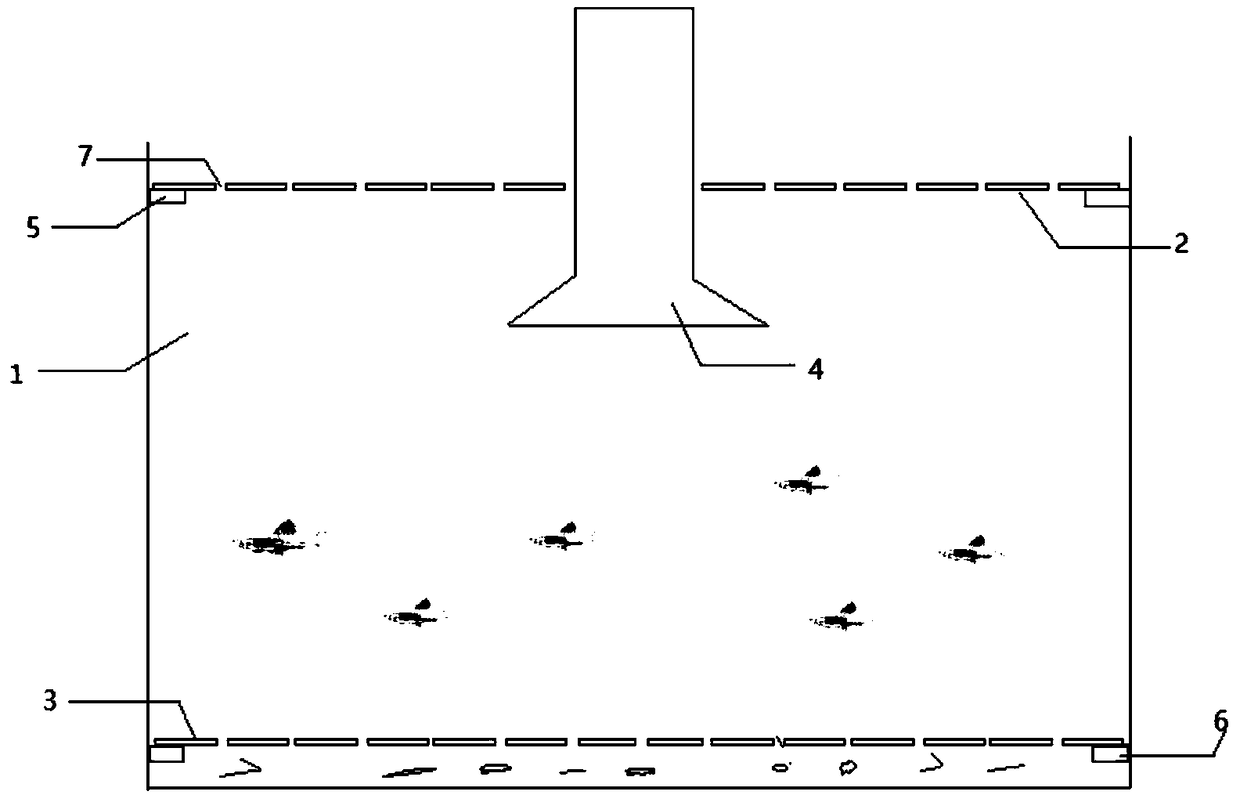Breeding method and device for improving survival rate of juvenile zebra fish
A breeding method and zebrafish technology, applied in fish farming, climate change adaptation, animal feed, etc., can solve problems such as different survival rate and quality of juvenile fish, different breeding and breeding methods, and different quality of embryos, so as to ensure survival and growth, easy to use and maintain, and low cost
- Summary
- Abstract
- Description
- Claims
- Application Information
AI Technical Summary
Problems solved by technology
Method used
Image
Examples
Embodiment 1
[0035] (1) Breed 50 zebrafish embryos in the middle of the box of the above-mentioned device for improving the survival rate of juveniles, blow the embryos away with a disposable dropper, so that the embryos do not adhere to each other, and remove dead embryos in the incubator in time ;
[0036] (2) hatch the zebrafish embryos, and the zebrafish larvae will all hatch after about 72 hours;
[0037] (3) After hatching, the temperature of the water body in the control device is 25°C, and the pH value of the water quality is controlled at 7; the juveniles are fed with egg yolk water from the first day, and the juveniles are fed with freshly hatched Artemia after 7 days;
[0038] (4) The experimental culture period is one month, and the survival rate of juvenile fish is counted.
Embodiment 2
[0040](1) Breed 70 zebrafish embryos in the middle of the box of the above-mentioned device for improving the survival rate of juveniles, blow the embryos away with a disposable dropper, so that the embryos do not adhere to each other, and remove dead embryos in the incubator in time ;
[0041] (2) hatch the zebrafish embryos, and the zebrafish larvae will all hatch after about 72 hours;
[0042] (3) After hatching, the temperature of the water body in the control device was 26°C, and the pH value of the water quality was controlled at 7.5; the juveniles were fed egg yolk water from the second day, and the juveniles were fed with freshly hatched Artemia after 8 days;
[0043] (4) The experimental culture period is one month, and the survival rate of juvenile fish is counted.
Embodiment 3
[0045] (1) Breed 80 zebrafish embryos in the middle of the box of the above-mentioned device for improving the survival rate of juveniles, blow the embryos away with a disposable dropper, so that the embryos do not adhere to each other, and remove dead embryos in the incubator in time ;
[0046] (2) hatch the zebrafish embryos, and the zebrafish larvae will all hatch after about 72 hours;
[0047] (3) After hatching, the temperature of the water body in the control device was 27°C, and the pH value of the water quality was controlled at 7.5; the juvenile fish were fed egg yolk water from the third day, and the juvenile fish were fed with freshly hatched Artemia after 10 days;
[0048] (4) The experimental culture period is one month, and the survival rate of juvenile fish is counted.
PUM
 Login to View More
Login to View More Abstract
Description
Claims
Application Information
 Login to View More
Login to View More - R&D
- Intellectual Property
- Life Sciences
- Materials
- Tech Scout
- Unparalleled Data Quality
- Higher Quality Content
- 60% Fewer Hallucinations
Browse by: Latest US Patents, China's latest patents, Technical Efficacy Thesaurus, Application Domain, Technology Topic, Popular Technical Reports.
© 2025 PatSnap. All rights reserved.Legal|Privacy policy|Modern Slavery Act Transparency Statement|Sitemap|About US| Contact US: help@patsnap.com


